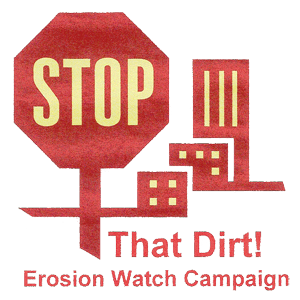Update as of January 1, 2022: This article mentions Indiana Rule 5 which has now been replaced with the Construction Stormwater General Permit. See this article for more information.
Environmental hazards at construction sites may seem obvious – construction waste and fossil fuel guzzling equipment literally generate tons of unwanted byproducts each year. (In 2018 alone, 600 million tons of construction and demolition debris were generated in the United States – more than twice the amount of generated municipal solid waste.)
Perhaps a lesser known construction hazard is sediment, soil particles that have detached from the land, a topic of concern especially the coming winter months. Whether from erosion due to disturbance of the land during a project, or vehicles tracking the soil out of the work area – sediment is the #1 pollutant (by volume) in Indiana waterways.1
The excess sediment itself in water can be a problem, but also contaminated discharge from construction activities mixes with soil particles. These particles can be swept off site or directly enter a nearby body of water, harming the surrounding ecosystem. Not to mention any discharge that directly enters the groundwater.
How can sediment be controlled?
In Indiana, the Marion County Soil and Water Conversation District (SWCD) has many resources for construction projects to help comply with the requirements of Rule 5 – regulations designed to reduce pollutants that are associated with construction and/or land-disturbing activities – including erosion control and stormwater protection.
The publication Erosion Prevention & Sediment Control Shirt Pocket Field Guide contains best management practices useful for construction projects throughout the country. Topics covered include:
- Staging Area
- Stone Construction Entrance
- Concrete Washout
- Silt Fence
- Sediment Logs or Waddles
- Rock Horseshoe Dam
- Temporary Seeding
- Check Dams
- Inlet Protection
- Dewatering
- Outlet Stabilization
- Permanent Seeding
- Erosion Control Blanket
- Site Inspections
It is important for both construction managers and communities alike to stay vigilant during construction projects. While a site may submit an initial construction plan, long duration of projects and changing conditions lead to more risk for the amount of disturbed soils. Adjustments should be make accordingly to keep our local waters clear of sediment and ensure all local and state laws are followed.
Stay connected to the Marion County SWCD for further resources during your projects and don’t forget to “Stop that Dirt!” to protect our waterways and all ecosystems.

